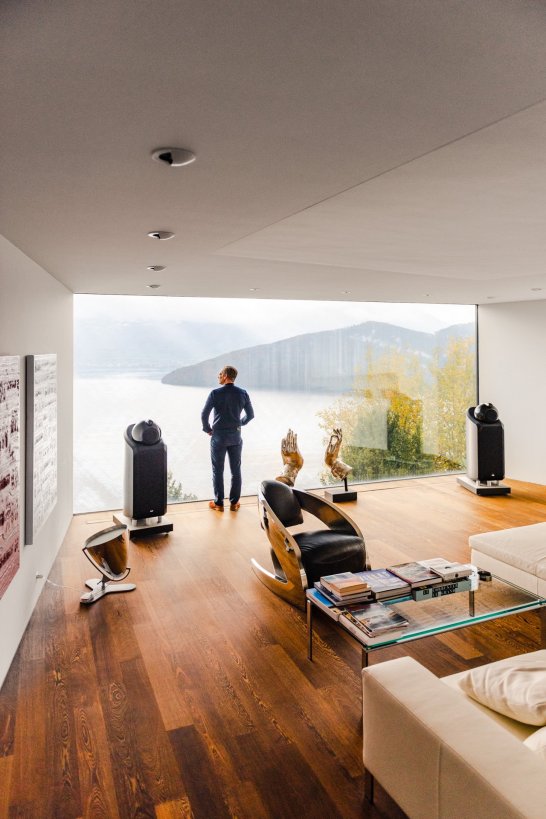
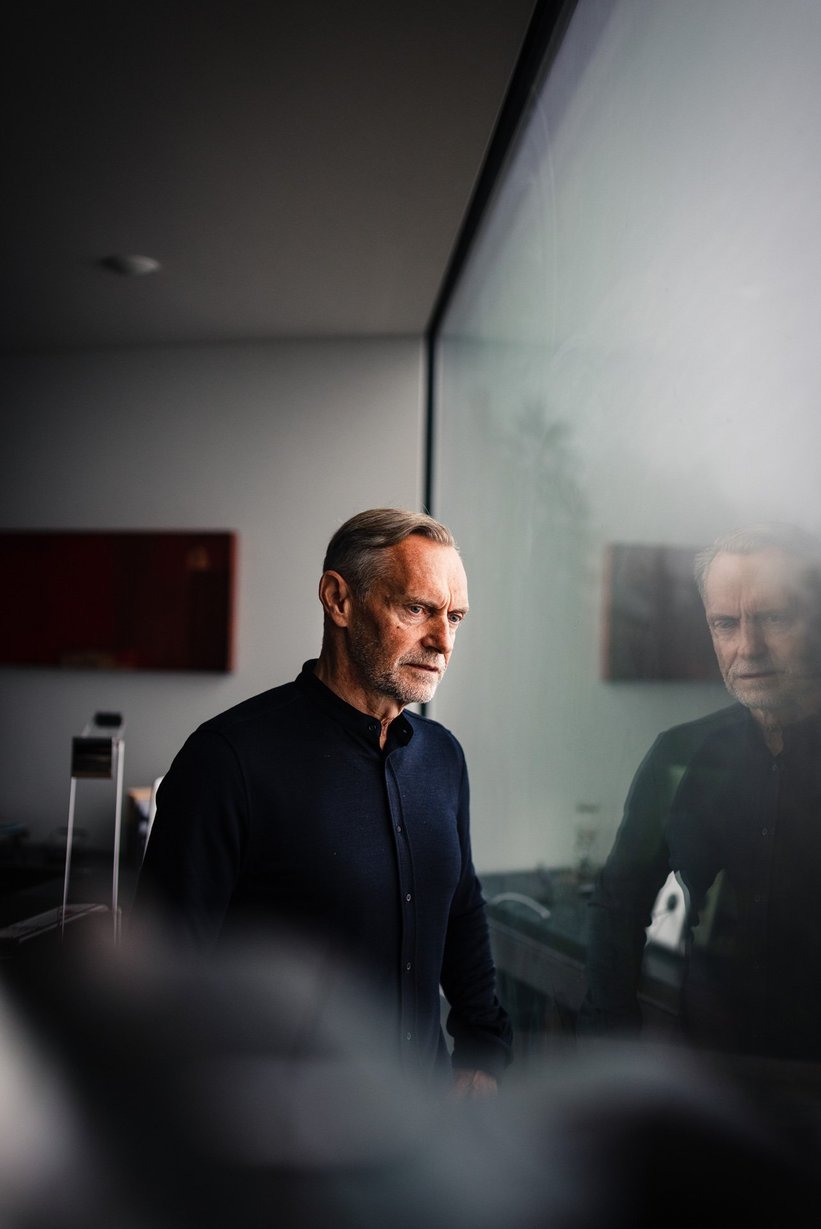
It’s a grey October day and the fog hanging over Lake Lucerne is as dense as Swiss barley soup. On sunny days the view of the Alps from the room-sized window must take your breath away, but in the milky light today you can only spy the faint summit of the Rigi and the dark water below. Adi Herzog stands on the top floor of the extraordinary villa that he’s built into the steep slope of a small Lake Lucerne community. A nested, modernist tower made of exposed concrete and positioned between dignified villas and rustic chalets – a four-storey cubist manifesto with panoramic windows and a pool. The BBC has filmed the property for Netflix’s popular series The World’s Most Extraordinary Homes. Rolex has photographed an advertising campaign in the house with Roger Federer. But there’s another reason besides the architecture and the view why this is considered one of the most spectacular buildings in Switzerland. In the boldly excavated garage in the heart of the house on the ground floor, six fabulous classic Porsches are sat bathing in neon light. And without these sports cars, the house would probably never have existed.
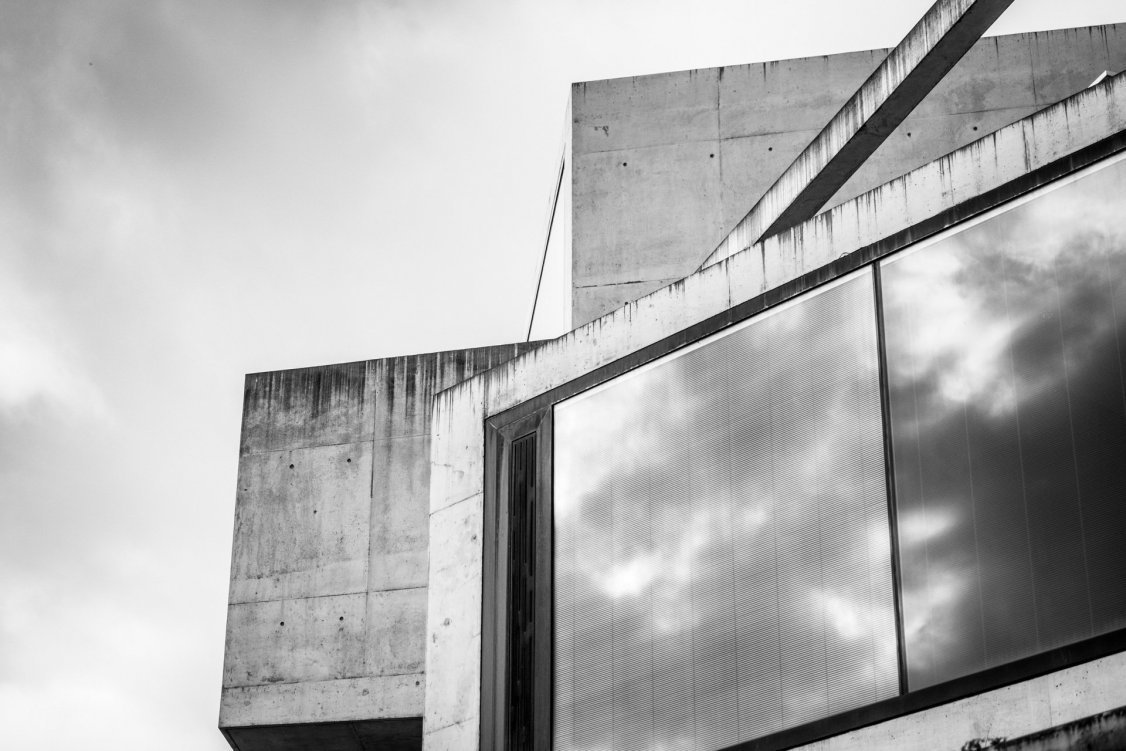
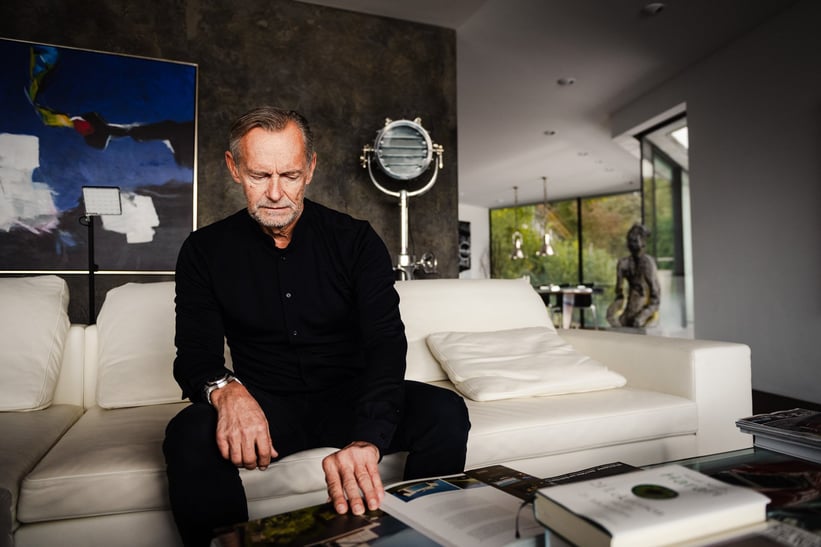

The dreams from our youth are often the ones we’ll hold onto for the rest of our lives, driving us to achieve something extraordinary. Herzog, a financial specialist, remembers exactly how his dream kindled. He pulls a faded edition of the German magazine Hobby dating back to 1969 from the USM shelf, flicks through it pensively and finds the article he’s looking for. “I read this test report on the Porsche 911 2.0 S when I was 12-years old,” he explains, “and ever since then, the car has never left my head.” By that point engines and technology were already in Herzog’s blood. As a teenager he modified his friends’ mopeds and at the age of 18, he bought an old Triumph Spitfire from a scrapyard and set about fixing it up in a draughty workshop, where his fingers froze stiff from the winter cold. “Back then I swore to myself that at some point I’d have my own heated garage where I could work on my cars without freezing.” Instead of a mechanic apprentice, Herzog pursued a career in the financial market and automotive restoration remained a hobby. And as he became more successful as a business economist, so his cars became faster and sportier. “My dream had always been a Porsche, and at 30 I could finally afford my first 911.” In total, Herzog has owned more than 30 Porsches, from 356s and early 911s to modern classics such as the Sport Classic and latest GT3.
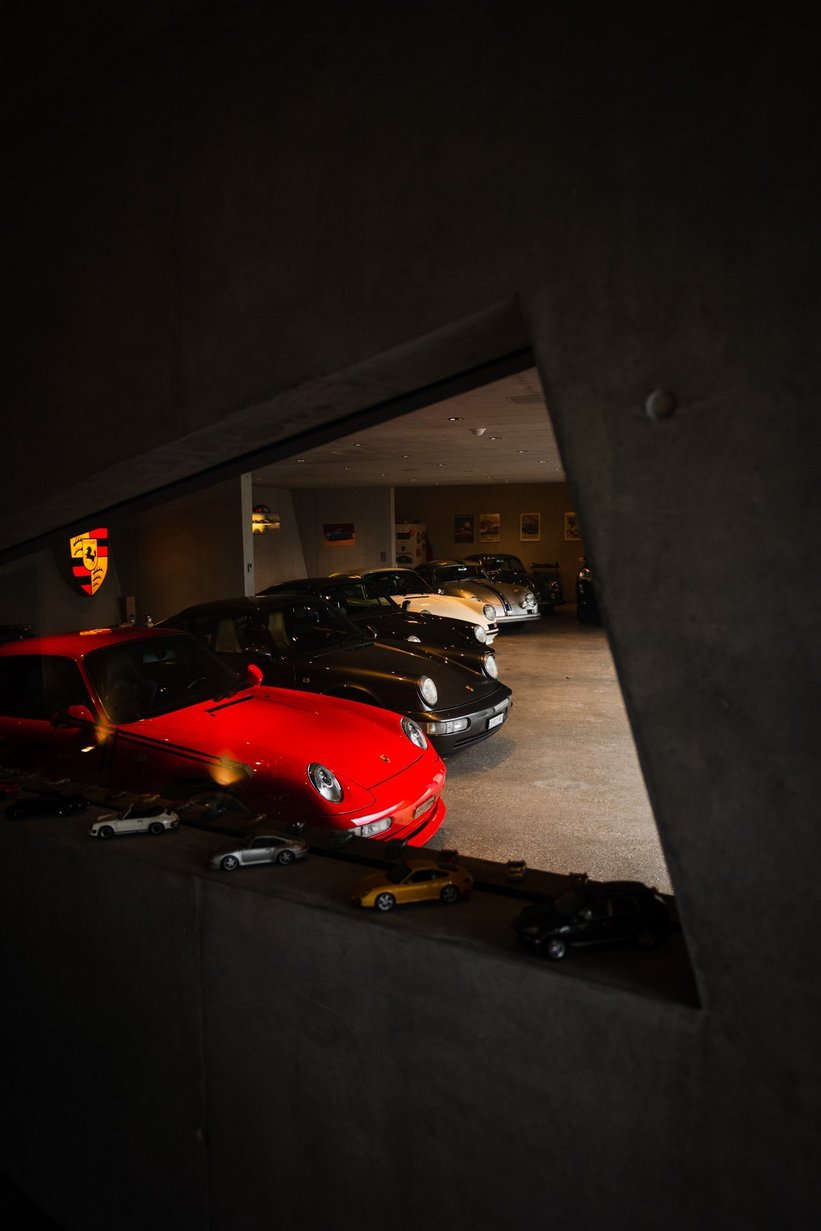
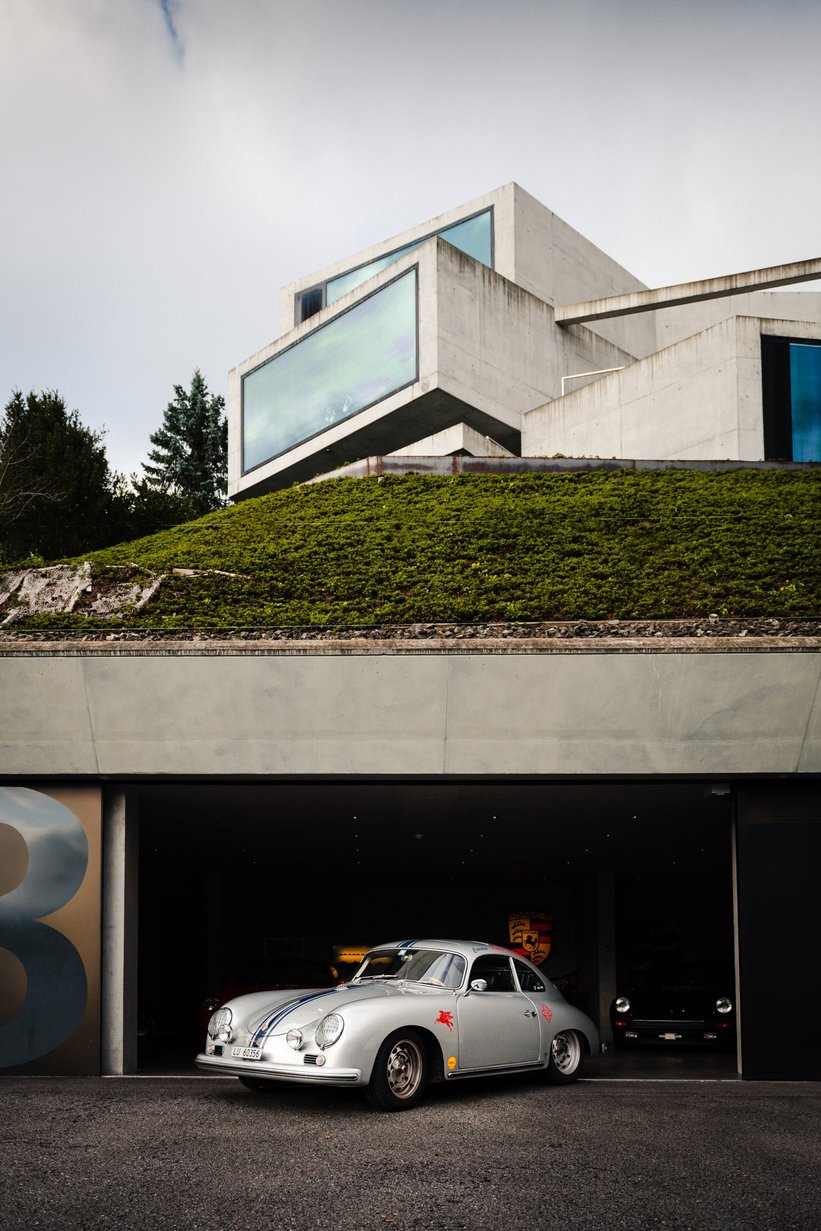
After building and successfully selling an asset management company, Adi Herzog returned to his roots at the age of 55 and acquired a job in the workshop of a Porsche specialist in Zurich. During his two-year apprenticeship as a mechanic, he not only learned the subtleties of maintenance and restoration, but he also prepared himself to fulfil another lifelong dream: to complete the Peking to Paris with his own Porsche 356. “We covered 13,000km in a month, crossing China, the Gobi Desert, Mongolia and Siberia. It was an experience that changed my life.” Herzog strolls across the garage to the silver Porsche 356. “I’m still impressed by how reliable this car is. With the exception of a little sand in the clutch, we travelled easily from Beijing to Paris, while other participants were forced to fix things every night.” It’s this proverbial reliability and functional minimalism that still inspires the collector to this day and drive him to realise his Porsche passion in ever different ways.
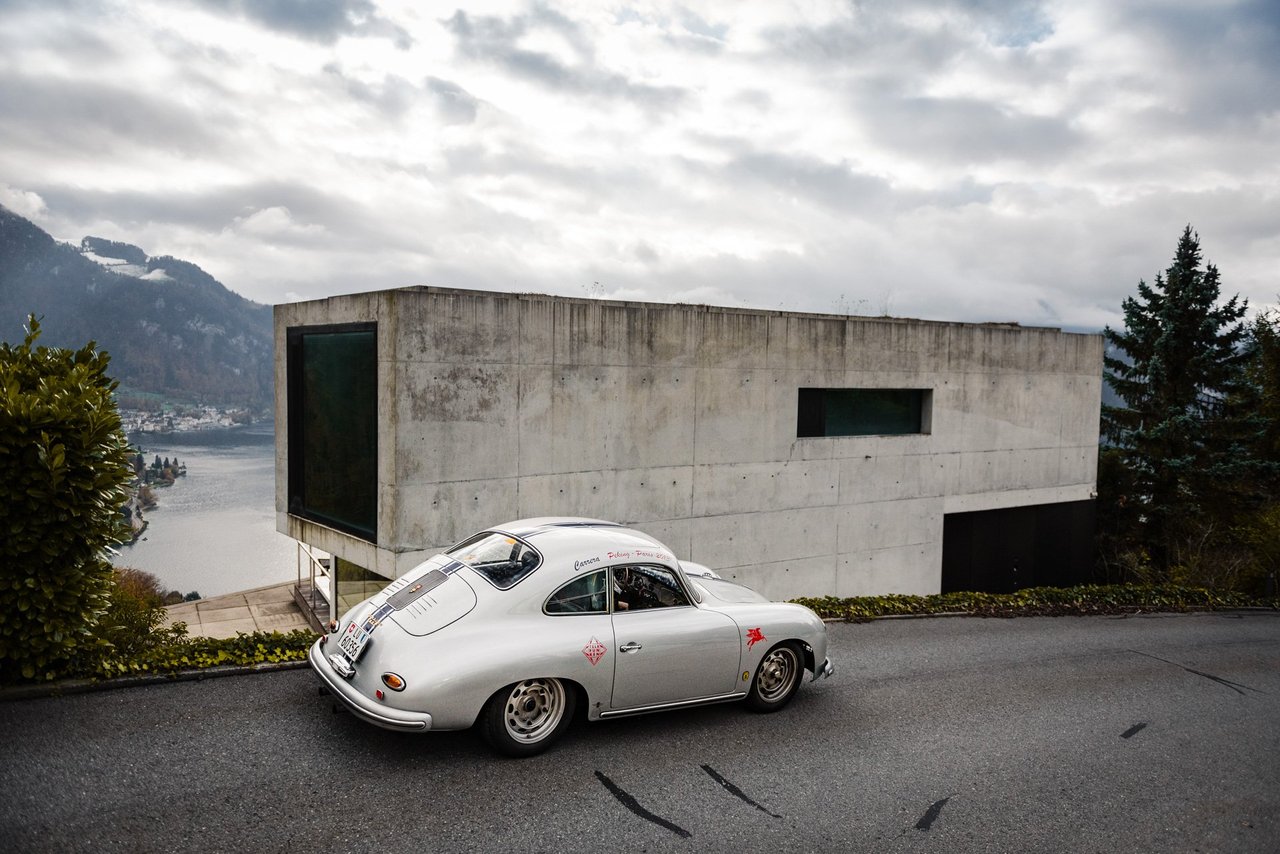
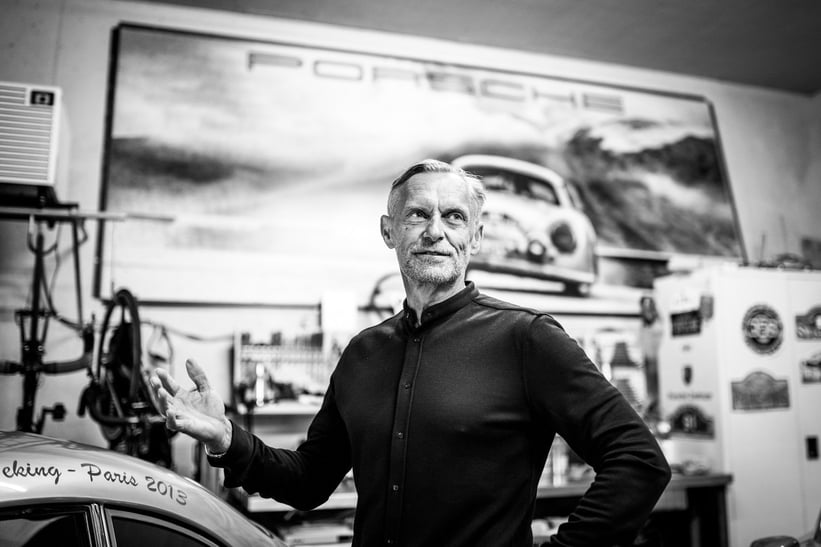

Inevitably, at one point there was no longer enough space at the workshop, and there it was once again: the dream of his own heated garage. There was to be space for at least six cars and a lift, and an additional three rooms: a lounge, a bedroom and an office. He didn’t need anything more. Herzog spoke to various architects and had numerous plans drawn up. Ultimately, it was Zurich-based Unger & Treina which convinced him with its concept of a structure divided into two parts. In the basement there was an entrance area with a spacious garage, while three big residential cubes were stacked on the slope above. A lift serves as the backbone of the three different areas. “At first the idea seemed too radical to me, but a friend convinced me when he said, “This is your house!”.” As minimalist as the design initially appeared, the implementation of the topographically and statically demanding construction project was incredibly complex. The steep slope had to be removed, the mass of earth had to be temporarily stored elsewhere and the load-bearing structure had to be concreted in, before the earth was filled back in. But in 2009, after two years of construction, Herzog’s dream house was finally finished.
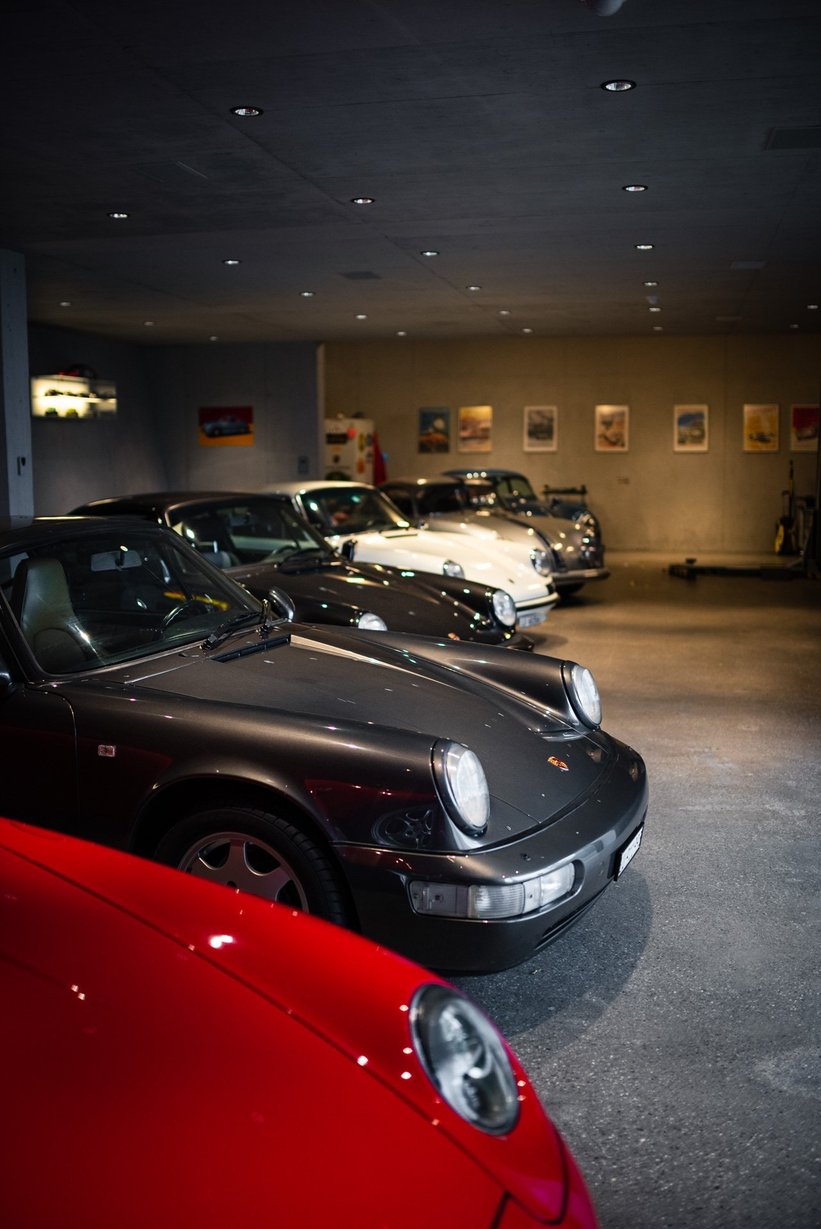
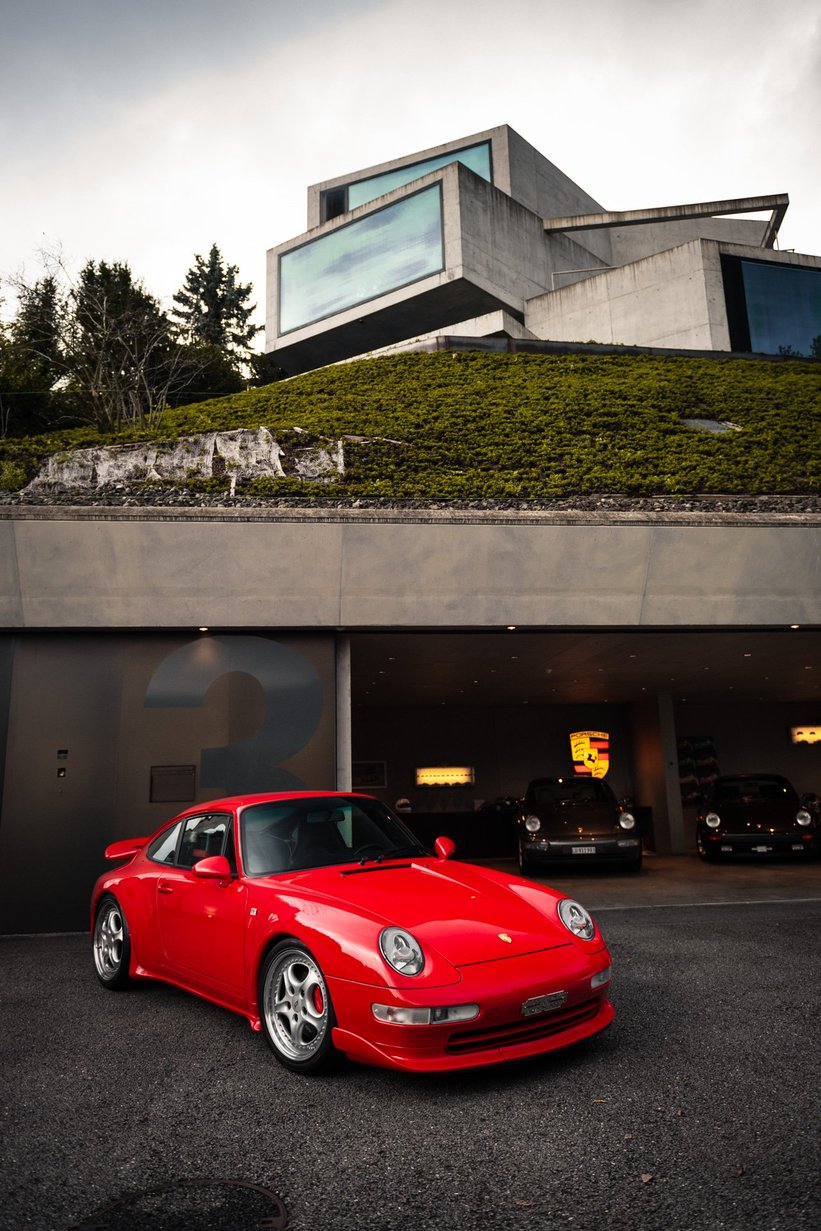
Entry is already a memorable experience. The large garage door slides sideways and reveals six Porsches, whose sensual curves and shiny coloured paintwork contrasts beautifully with the raw concrete room. Through an asymmetrically cut, bunker-like tunnel you reach the lift, transporting you to the upper floors, which are flooded with light. The angled planes stacked on top of each other seem to flow and merge. Everything is geared towards the huge window fronts, which point in different directions depending on which floor you’re on and carve out the scenic landscape like enormous canvases. From the bedroom you can see the sunlit Rigi in the morning, while from the living room, the impressive cinemascope panorama of the Bürgenstock peaks towering over the lake is revealed in the afternoon. The mood of the house also changes with the time of day and the course of the sun. Atriums and skylights diffuse brightness depending on the weather or stage a high contrast show of light and shadow. And on mild summer evenings, the rock faces glowing a warm and deep red on the other side of the lake can be admired from the outdoor pool.
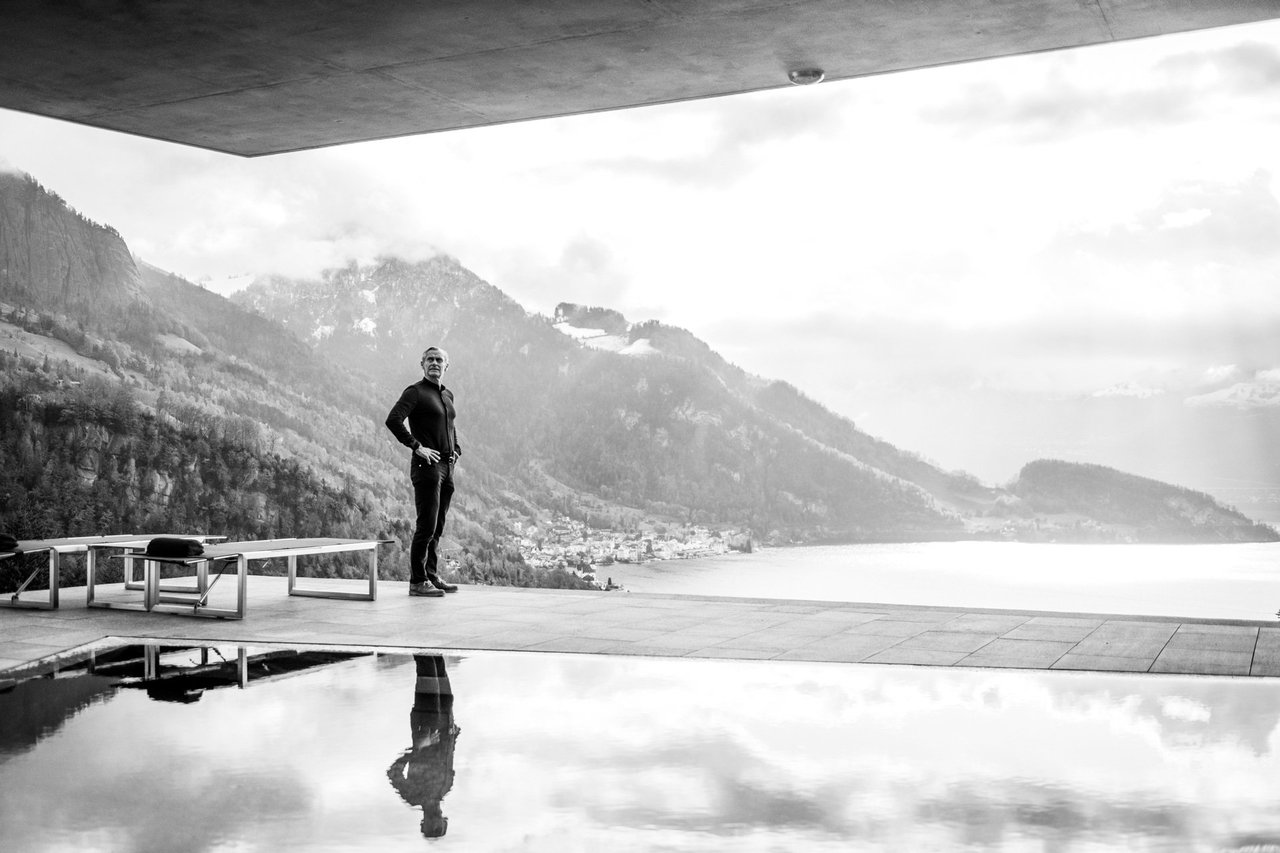
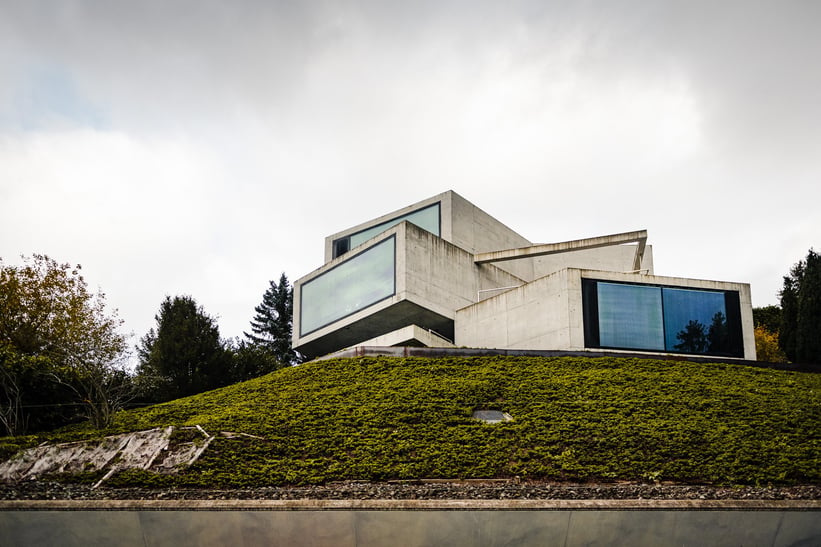
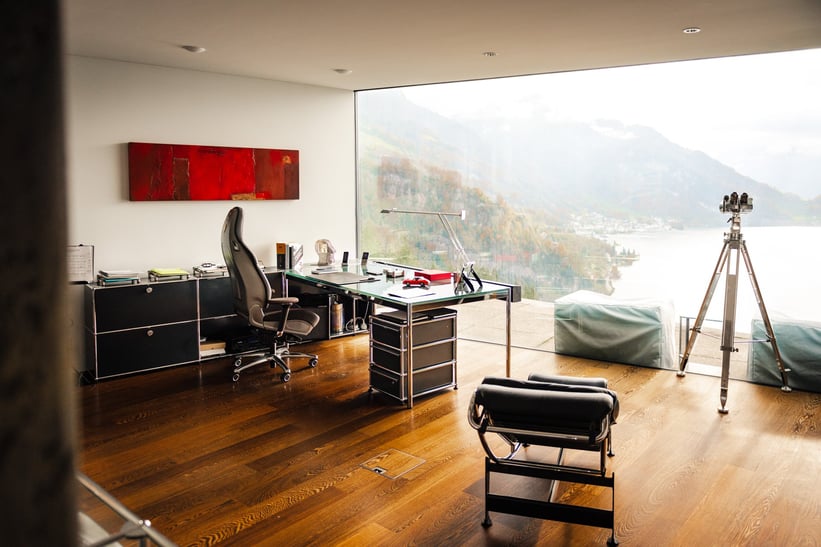
Achieving great things with simple means – Herzog appreciates this philosophy in his Porsches, but it was also the driving force behind the construction of his minimalist dream home. And while the floorplan is designed to leave the maximum amount of space for the perpetual experience of the house’s occupants and not compete with the visual forces of nature beyond the panoramic windows, the architect perfected the composition with subliminal and cleverly integrated details. The exposed concrete, for example, was treated retrospectively to make it look even smoother and shinier. Warm Wenge wood and dark basalt stone, meanwhile, provide subtle contrast. And instead of an air-cooled boxer engine, the soundtrack is provided by a sophisticated surround system.
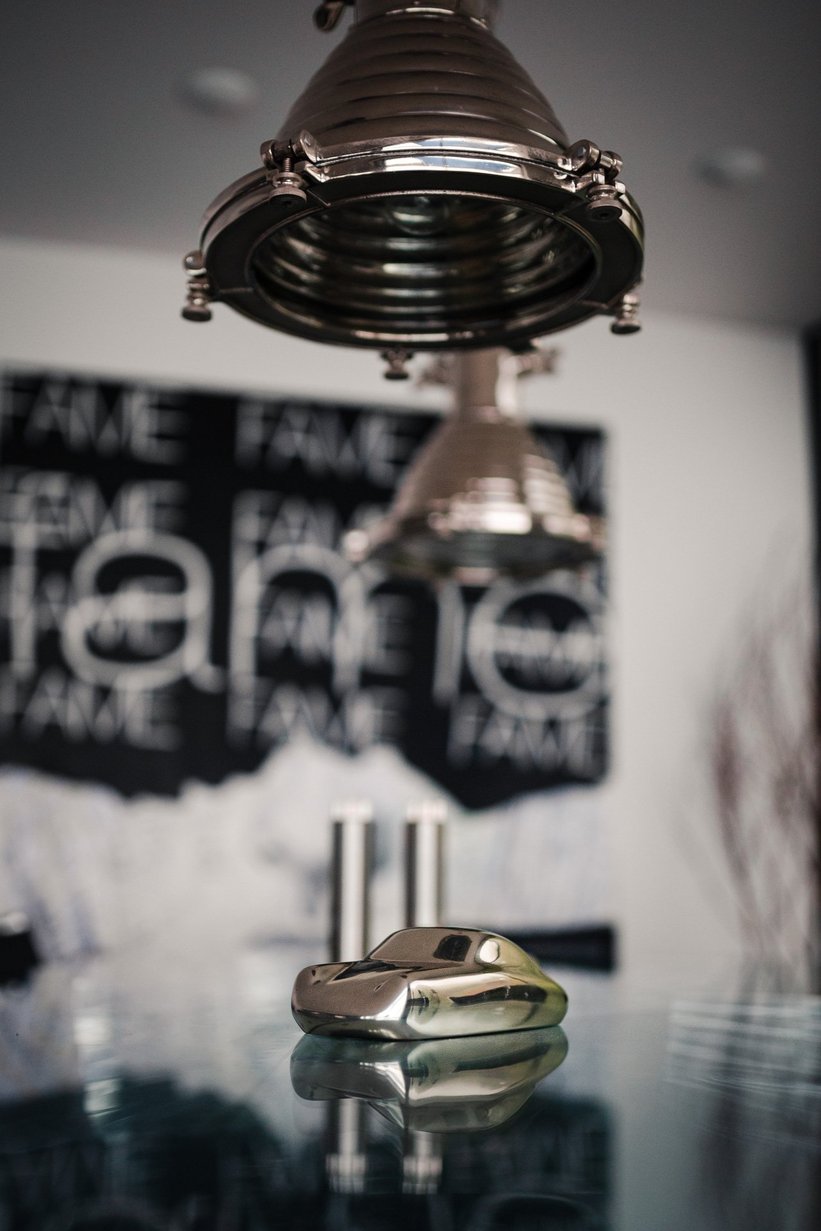
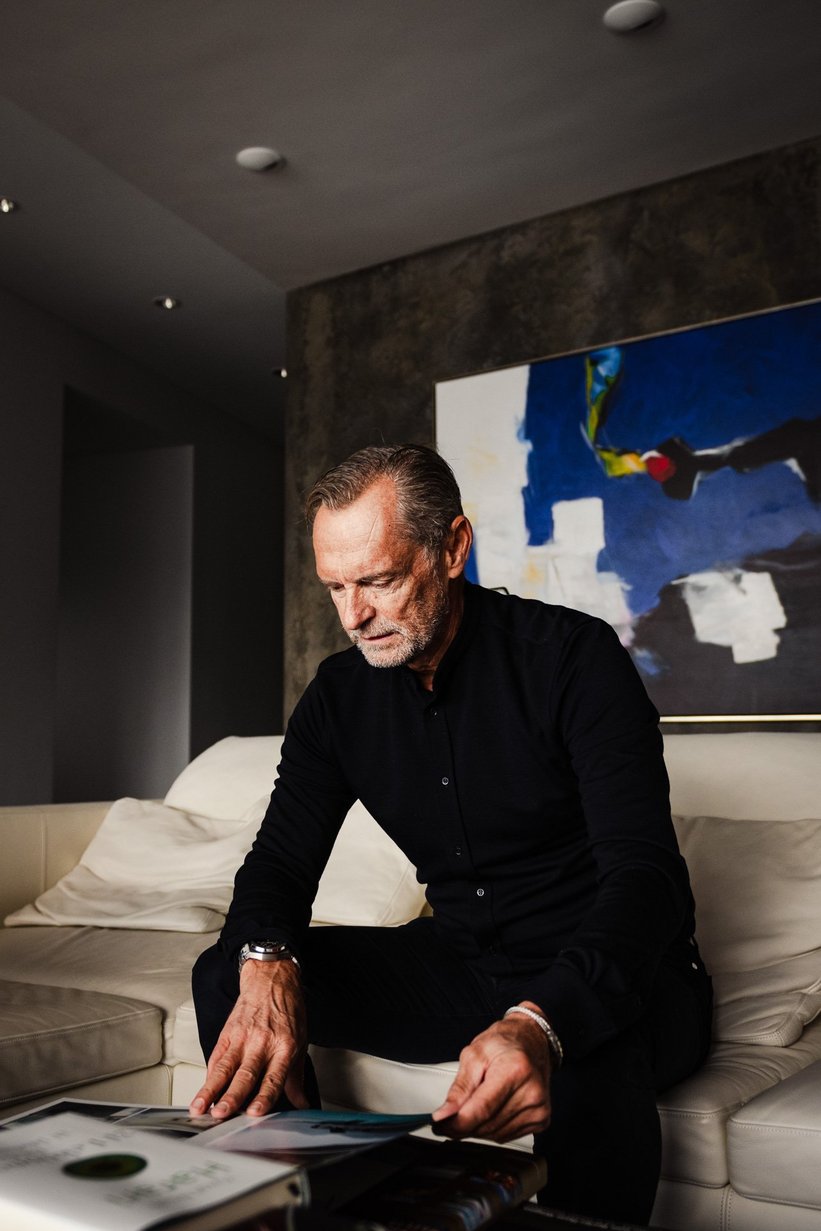
The classic furniture is also timelessly simple and combined here and there with a contemporary work of art. Only in the kitchen does Herzog break the bold austerity of the composition. Next to the sink there’s an old petrol pump, the analogue clock comes from a racing car and the dining table, illuminated by ship lamps, was once the wing of a DC-10. After all, the mechanic and hobby restorer can’t escape the industrial aesthetics of the 20th century – the rivets, screw threads and cool shine of steel.
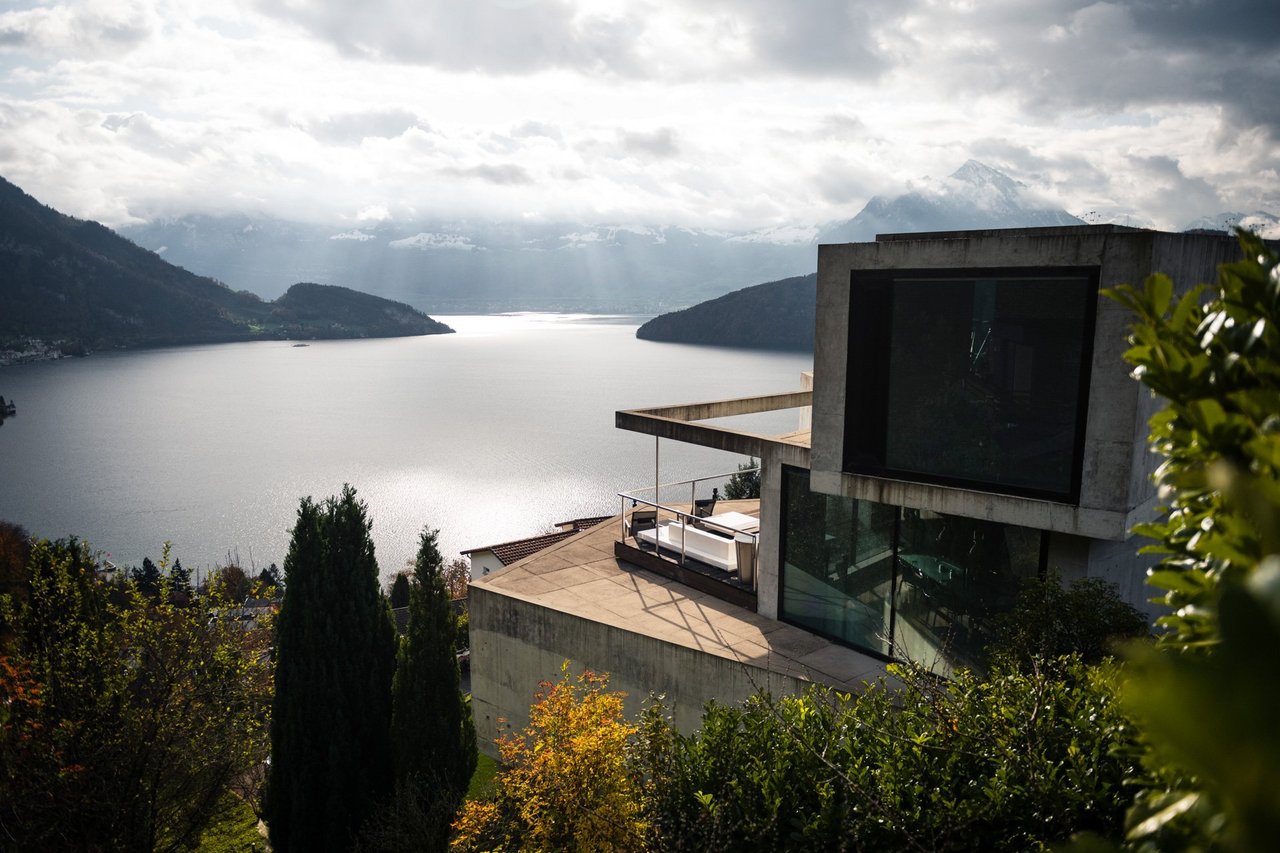
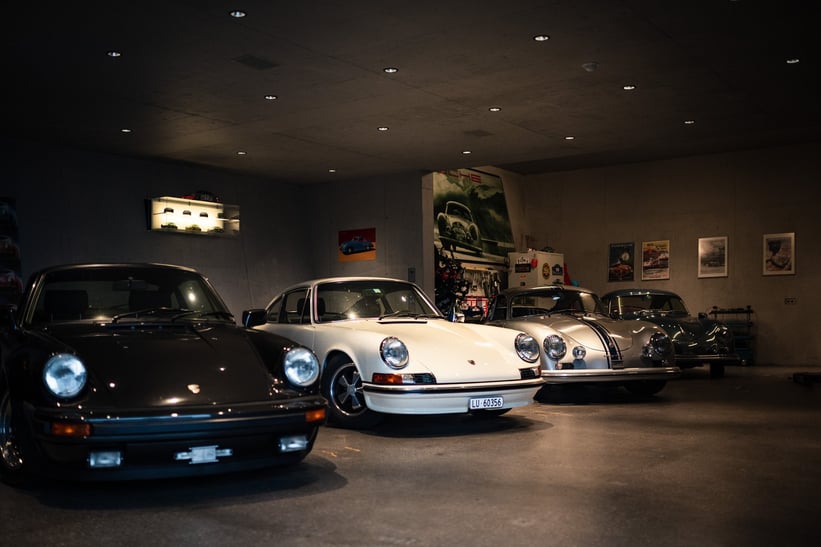
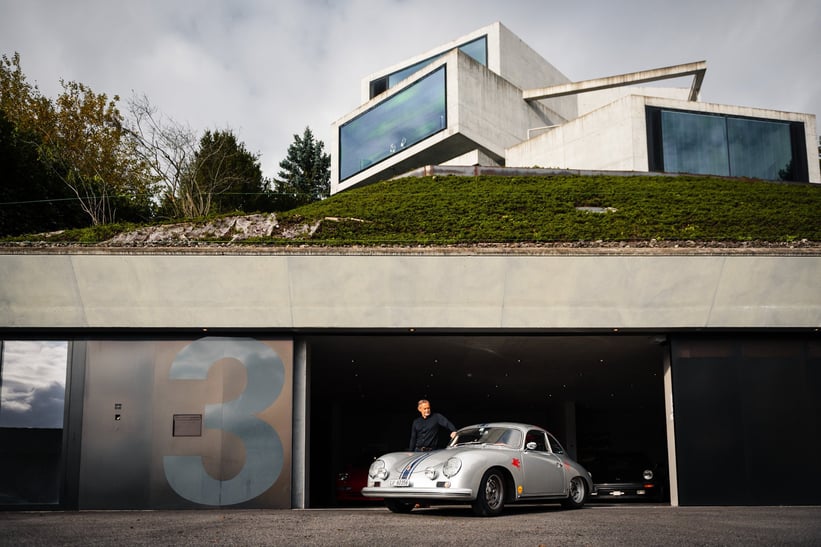
Suddenly the sky clears and, like in Hitchcock’s Vertigo, one becomes dizzy for moment in the face of a huge alpine panorama that’s almost unreal in depth. “I used to travel a lot of the passes with my Porsches,” Herzog concludes, looking out across the lake where the serpentine roads of the Gotthard, Furka, Susten and Nufenen passes promise endless driving pleasure. “But since I’ve had the house, I mostly enjoy the Alps from here.” If the Porsche collector doesn’t drive to the mountains, the mountains simply come to him.
With his Porsche 356, air-cooled 911 icons and Cayman GTS, Herzog already has the perfect collection. And yet he’ll soon make room for another exceptional athlete: the new Porsche Taycan. A suitable photovoltaic system for the avant-garde electric sports cars is also being planned – the old dream of a heated garage can still be perfected.
Photos: Andrea Klainguti for CD Works © 2020



















































